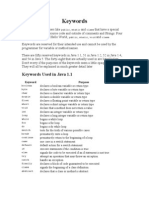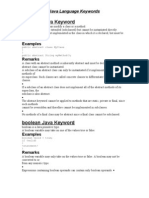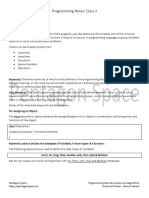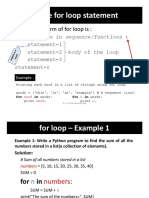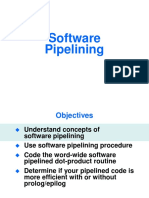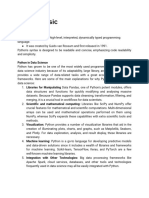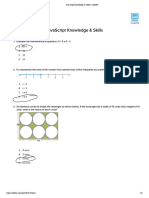0% found this document useful (0 votes)
534 views5 pagesJava Keywords - Meaning
This document defines Java keywords and their purposes. It lists 52 keywords including abstract, assert, boolean, break, byte, case, catch, char, class, const, continue, default, do, double, else, enum, extends, final, finally, float, for, goto, if, implements, import, instanceof, int, interface, long, native, new, package, private, protected, public, return, short, static, strictfp, super, switch, synchronized, this, throw, throws, transient, try, void, volatile, and while and provides a 1-3 sentence description of what each keyword is used for in Java code.
Uploaded by
cvelanCopyright
© © All Rights Reserved
We take content rights seriously. If you suspect this is your content, claim it here.
Available Formats
Download as DOCX, PDF, TXT or read online on Scribd
0% found this document useful (0 votes)
534 views5 pagesJava Keywords - Meaning
This document defines Java keywords and their purposes. It lists 52 keywords including abstract, assert, boolean, break, byte, case, catch, char, class, const, continue, default, do, double, else, enum, extends, final, finally, float, for, goto, if, implements, import, instanceof, int, interface, long, native, new, package, private, protected, public, return, short, static, strictfp, super, switch, synchronized, this, throw, throws, transient, try, void, volatile, and while and provides a 1-3 sentence description of what each keyword is used for in Java code.
Uploaded by
cvelanCopyright
© © All Rights Reserved
We take content rights seriously. If you suspect this is your content, claim it here.
Available Formats
Download as DOCX, PDF, TXT or read online on Scribd
/ 5






